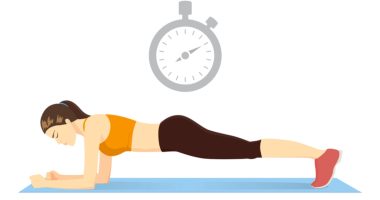6 Benefits of Walking for Exercise: Walking is one of the simplest yet most effective forms of exercise. It requires no special equipment, can be done almost anywhere, and offers a wide range of physical and mental health benefits. From aiding weight loss to improving bone health, walking proves that small steps can lead to big changes. Below, we explore six unique benefits of walking for exercise and how they can enhance your overall well-being.

6 benefits of walking for exercise
To reap the most rewards, make regular physical activity part of your daily routine. The American Heart Association recommends 150 minutes of moderate-intensity aerobic exercise a week, or about 22 minutes a day. Here, some of the biggest health benefits of walking for exercise.
1. Brisk Walking Sharpens Your Memory
Walking briskly not only boosts your cardiovascular health but also enhances cognitive function. Studies have shown that regular brisk walking improves memory and reduces the risk of dementia. For instance, research involving older adults revealed that walking 2.5 miles daily reduced memory decline by 17%, compared to a 25% decline in those who walked less than half a mile weekly. Incorporating brisk walking into your routine can keep your brain sharp while promoting mental clarity.
2. Climbing Stairs Strengthens Your Heart
Adding stair climbing to your walking regimen is an excellent way to improve heart health. This activity elevates your heart rate, lowers blood pressure, and strengthens the heart muscles. According to studies, women who walk or climb stairs for at least 30 minutes daily can reduce their risk of stroke by up to 40%. Whether at home or work, taking the stairs instead of the elevator can significantly benefit your cardiovascular system.
3. Silly Strolls Torch Calories
Walking doesn’t have to be monotonous; adding variety or humor to your strolls can make it more enjoyable and effective. For example, walking in unconventional ways—such as exaggerated strides or playful movements—can increase calorie burn while engaging different muscle groups. A brisk 30-minute walk burns approximately 200 calories. Over time, this simple activity can contribute to weight loss and improved fitness levels.
4. Walking the Nordic Way Boosts Balance
Nordic walking involves using poles to engage your upper body while you walk, making it a full-body workout that enhances balance and coordination. This method is particularly beneficial for older adults or individuals recovering from injuries as it reduces strain on joints while improving stability. Nordic walking has been shown to tone muscles and increase endurance, making it an excellent choice for those seeking a low-impact yet effective exercise.
5. A Sunny Jaunt Bolsters Your Bones
Walking outdoors in sunlight provides dual benefits: physical activity and vitamin D exposure. Vitamin D is crucial for bone health as it aids calcium absorption, reducing the risk of osteoporosis. Studies indicate that post-menopausal women who walk 30 minutes daily can lower their risk of hip fractures by up to 40%. Walking in sunny weather not only strengthens bones but also lifts your mood through exposure to natural light.
6. Walking with a Friend Reverses Stress
Walking with a friend combines physical exercise with social interaction, creating a powerful stress-relieving activity. Sharing conversations while strolling releases endorphins—the body’s natural mood boosters—helping reduce anxiety and depression. Furthermore, studies have found that group walks improve emotional well-being and foster a sense of community, making this activity as beneficial for mental health as it is for physical fitness.
Additional Benefits of Walking
Beyond these six unique advantages, walking offers numerous other benefits:
- Weight management: Regular walking helps burn calories and maintain a healthy weight.
- Joint support: It alleviates arthritis symptoms by improving joint fluid circulation.
- Immune boost: Walking daily reduces the risk of illnesses like colds and flu.
- Improved sleep: Morning walks have been linked to better sleep quality in older adults.
Real-Life Example: A Weight Loss Success Story
Walking has transformed lives, as illustrated by Batch’s inspiring journey. Starting with short treadmill sessions at 1.5 mph for 20 minutes daily, Batch gradually increased his pace and duration over time. In one year, he lost over 100 pounds simply by walking regularly and adjusting his diet—a testament to the power of consistent effort.
FAQs About Walking for Exercise
Q. How long should I walk each day?
A. Experts recommend at least 30 minutes of moderate-intensity walking five days a week for optimal health benefits.
Q. Can walking help prevent osteoporosis?
A. Yes! Regular walks strengthen bones and reduce the risk of fractures by improving bone density.
Q. Is brisk walking better than slow walking?
A. Brisk walking burns more calories and offers greater cardiovascular benefits compared to slow-paced strolling.
Walking is more than just a mode of transportation—it’s a pathway to better health. Whether you’re looking to lose weight, prevent osteoporosis, or simply enjoy life more fully, incorporating walking into your daily routine can make all the difference. So lace up your shoes, grab a friend or some Nordic poles, and take the first step toward a healthier you!
Also Read | How to Sleep Better This Spring and Summer: Expert Advice










